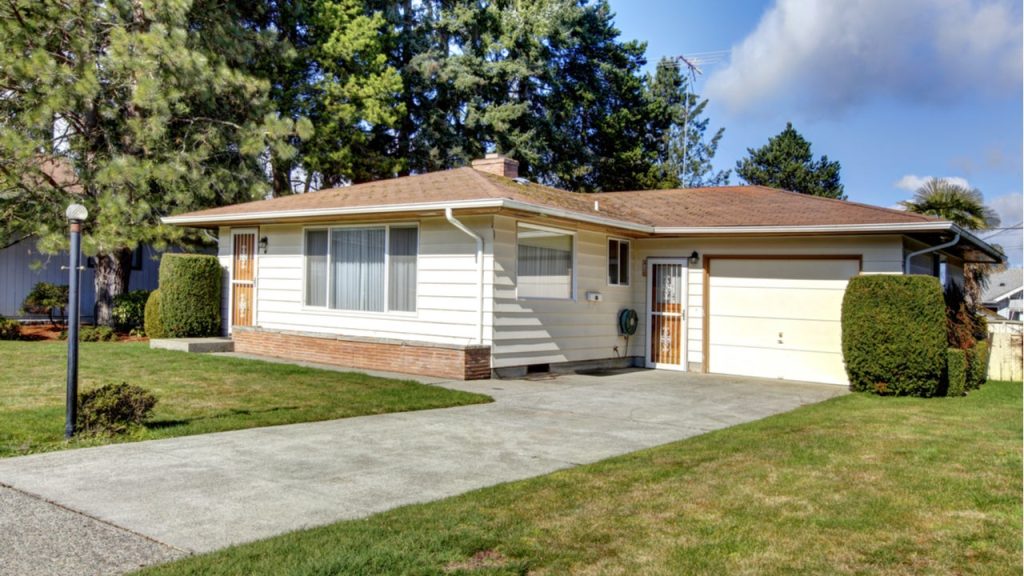Our writers and editors used an in-house natural language generation platform to assist with portions of this article, allowing them to focus on adding information that is uniquely helpful. The article was reviewed, fact-checked and edited by our editorial staff prior to publication.
Key takeaways
- A balloon mortgage involves making small payments for a set period, followed by one large balloon payment at the end of the loan term.
- Balloon mortgages can be risky for borrowers, as they may struggle to make the large payment due at the end of the loan term.
- Other mortgage options, such as conventional loans or FHA loans, may be better suited for those looking for lower monthly payments without the risk of a large balloon payment.
A balloon mortgage is a type of home loan in which you make low or no monthly payments for a short term, usually five or seven years. After this low- or no-payment period ends, you pay a large lump sum, which settles the remaining balance in full. Because they don’t require much outlay right away, balloon mortgages can be tempting — but they can easily explode on you also. Here’s what this kind of loan is all about, from the risks to the rewards.
What is a balloon mortgage?
With a balloon mortgage, you make small payments for a defined period of time, then one large, final payment at the end of the term. The initial payments might go solely to interest or to both interest and the loan principal, depending on how the mortgage is structured. Whichever, most of these loans require you to pay off the entire remaining balance at once. The balloon payment can be thousands or tens of thousands of dollars, and generally more than twice the monthly payment, according to the Consumer Financial Protection Bureau (CFPB).
In other words, your payment amount dramatically increases, or balloons, at the end of the term — hence, the name.
Balloon mortgages fall under the category of non-qualifying loans (non-QM loans). A non-qualified mortgage is a type of mortgage that doesn’t conform to certain standards set by the CFPB. This means that lenders can be freer in setting the terms and criteria, but also that they don’t need to meet the CFPB’s borrower-protection requirements.
How does a balloon mortgage work?
Balloon mortgages don’t amortize the way traditional mortgages do: Your installment payments aren’t structured to pay off the loan by the time the term ends. Instead, with a balloon mortgage, you make small monthly payments for a set period. After this period ends, the balloon payment, a substantial lump-sum amount, becomes due, representing the loan’s remaining balance. These balloon payments made before the final lump-sum payment can be either interest-only or include both principal and interest.
Balloon mortgages often have higher interest rates than traditional fixed or adjustable-rate mortgages. Their standards for creditworthiness may also differ. For example, they may expect you to have a certain amount of assets or cash reserves, to ensure you can make the balloon payment when it arrives.
These loans typically have shorter terms than traditional mortgages, which can last up to 30 years. Balloon loans generally range from five to 10 years, though longer and shorter terms can sometimes be found.
Balloon mortgages are considered non-conforming loans. That means they fall outside the criteria set by the Federal Housing Finance Agency (FHFA), and so major market makers Fannie Mae and Freddie Mac won’t buy them from lenders. It’s for this reason that many banks and mortgage companies don’t offer balloon mortgages.
Example of a balloon mortgage
Curious about the math behind a balloon mortgage? Here’s an example, using Bankrate’s balloon mortgage calculator.
Assume that, to purchase a home, you take out a balloon mortgage with a seven-year term in the amount of $200,000. The interest rate, in this example, will be fixed at 4.5 percent.
Payment schedule
| Year | Total Payments | Principal Paid | Interest Paid | Ending Principal Balance |
|---|---|---|---|---|
| $200,000.00 | ||||
| 1 | $12,160.44 | $3,226.44 | $8,934.00 | $196,773.56 |
| 2 | $12,160.44 | $3,374.67 | $8,785.77 | $193,398.89 |
| 3 | $12,160.44 | $3,529.69 | $8,630.75 | $189,869.20 |
| 4 | $12,160.44 | $3,691.84 | $8,468.60 | $186,177.36 |
| 5 | $12,160.44 | $3,861.44 | $8,299.00 | $182,315.92 |
| 6 | $12,160.44 | $4,038.85 | $8,121.59 | $178,277.07 |
| 7 | $186,213.13 | $178,277.07 | $7,936.06 | $0.00 |
During those seven years, your monthly payments will be $1,013.37, comprising some principal but mostly interest. You’ll pay the bulk of the principal — in this scenario, $175,066.06 — at the end of the loan term.
Your total payments will be $259,176, of which $59,176 will go toward interest alone.
Types of balloon mortgages
A balloon mortgage can be structured in several ways:
Interest and principal payment: In this case, the initial monthly payments might be calculated based on a typical 15-year or 30-year amortization schedule, even though the loan term might only be for five or seven years. When the term ends, you’d need to pay the remaining balance in one lump sum. In another version of this type of structure, you make payments on a fixed-rate basis for a period of time, then your rate increases.
Interest-only payments: In this scenario, you only pay interest for an initial period. Once that period’s over, you owe the remaining balance of the loan.
No payments: For this type, you won’t make any monthly payments for a very short term, but you’ll accrue interest. Once the term’s up, both the interest and principal are due in one large payment.
When is the balloon payment due?
Under the terms of a balloon mortgage, the balloon payment is due on the loan’s maturity date. For instance, if you take out a 10-year balloon mortgage, the balloon payment is due once the 10 years have elapsed.
If you’re uncertain about when your balloon payment is due and how much it will be, you can find this information by looking at your mortgage note.
Pros and cons of a balloon mortgage
Pros of balloon mortgages
- Low or no monthly payments: You might have to pay only interest during the initial period or make low or no monthly payments at all.
- Can buy a home sooner: You could get into a home sooner thanks to more affordable monthly payments.
- Can focus on other goals: The lower payments allow you to use funds for emergency savings, investing for retirement, pay off other debts or achieve other financial goals.
- No prepayment penalty: There’s usually no prepayment penalty on a balloon mortgage, so you can make extra payments or pay it off before it matures without incurring a fee.
Cons of balloon mortgages
- Risk to home: When the loan comes due, you’ll either need to pay it off, refinance or sell the home. None of these options are guaranteed, and if you can’t make the payment, you could lose the home and severely damage your credit.
- Deeper debt: To cover the steep cost of the balloon payment, you may need to obtain another loan if you don’t have the cash set aside.
- Hard to find: Due to the level of risk, many mortgage lenders don’t offer balloon loans.
- Higher rates: Lenders take on more risk with a balloon loan, so the rates are typically higher compared to traditional types of loans.
- Difficulty refinancing: If you’re not making payments (or are making interest-only payments), you might not have enough equity in your home to do a refinance when the balloon mortgage term is up. (Most lenders look for at least 20 percent home equity.)
How to pay off a balloon mortgage
There are four primary ways to deal with a balloon payment when it comes due:
Pay off the mortgage: If you can afford it, the simplest — but priciest — option is to save enough money to pay the remaining loan balance in full when it’s due. This route is best reserved for those who anticipate a windfall (such as an inheritance) or a substantial increase in income.
Make extra payments: Paying down your loan principal more aggressively with extra payments during the initial period reduces the remaining balance due at the end of the loan term. If you have extra income each month or get a large tax refund, consider directing some of the funds to your mortgage principal.
Sell your home: If you were to make improvements to the home and sell it by the time you need to repay the balance in a lump sum, the proceeds from the sale could provide you with enough cash to make it happen.
Refinance: If you don’t have enough cash to make the balloon payment, you can see if you’ll qualify for a refinance. To qualify, you’ll need an adequate credit score (at least 620), proof of steady income and at least 20 percent equity in your home. If you don’t have enough equity, you can explore low- or no-equity refinance options. You’ll also need to consider how the new payment impacts your budget. If you were enjoying low monthly payments with the balloon mortgage, refinancing to another loan could increase those payments significantly.
How to get a balloon mortgage
If you’re considering a balloon mortgage, first check if you qualify, which usually means having a minimum credit score of 620, stable income and consistent employment history. Then, search for lenders that offer non-QM loans, and consider working with mortgage brokers who connect with these lenders.
Ask potential lenders if they can perform automatic underwriting to see if you might qualify for a traditional loan. Additionally, find out if the lender originates its own non-QM loans or if another company services the loan. Understand the fees, special terms, and features that could impact your borrowing costs.
Who are balloon mortgages best for?
Balloon mortgages often appeal to a specific category of borrowers, including property flippers, real estate investors and certain homeowners — like borrowers with significant assets and those anticipating an inheritance or other major cash windfall. These individuals typically foresee a substantial increase in their income, plan to sell their property before the balloon payment is due or anticipate they will be able to settle their debts or acquire funds from other sources.
A non-qualifying mortgage loan like a balloon mortgage could also benefit applicants who don’t fit the traditional-mortgage box: self-employed borrowers with irregular income, foreign nationals with low U.S. credit scores, prime borrowers seeking specific loan features and near-prime borrowers with credit issues.
A balloon mortgage might also be beneficial if you anticipate a drop in interest rates and plan to refinance your mortgage. If you intend to reside in your home for a brief period, selling it before the balloon payment comes due, this sort of loan could also be advantageous. Even if your credit isn’t ideal, you might feel assured that you’ll have the future income to settle the balloon payment.
Should you get a balloon mortgage?
While a balloon mortgage might make sense for some people, like house flippers, there are also some risks associated with balloon mortgages, including defaulting on the loan if you’re unable to make the balloon payment at the end of the loan term. In such cases, your lender will likely take steps to foreclose on your home. You’ll also build equity more slowly, so you may not make a huge windfall when you eventually sell it if your loan is still unpaid at that time.
In addition, if you’re counting on selling the home to make the balloon payment, there’s also the risk of a real estate market downturn that leaves you unable to fetch a high enough price to pay the full amount due.
Balloon mortgage FAQ
-
Because they are riskier products, balloon mortgages tend to have higher interest rates than traditional fixed- or adjustable-rate mortgages (ARMs). However, the interest rate on a balloon mortgage might be lower than the rates on other options at first, and you might not have to pay interest at all initially.
Balloon mortgages differ from other mortgages in other ways as well. For instance, not all lenders offer balloon mortgages. Often, these types of mortgages can only be found through small or private lenders, as they don’t conform with qualified mortgage guidelines. Additionally, the eligibility criteria for balloon mortgages may be slightly different than a traditional mortgage.
-
Balloon mortgages pose a risk for lenders largely relying on the borrower’s ability to make a large one-time payment at the end of the loan term. If the borrower’s financial situation deteriorates, or the value of the property decreases, they might struggle to sell or refinance the property to meet the balloon payment and default on the loan. This risk is heightened due to the possibility that the borrower may only be making payments toward the interest, or making minimum payments throughout the loan term.
Balloon mortgages are also riskier for lenders because they can’t sell them as easily. Major secondary market makers Fannie Mae and Freddie Mac aren’t allowed to purchase them. So often a lender has to keep the loan on its own books.
-
For potential homeowners who want to limit their initial costs, an FHA graduated payment loan or VA loan may be a better option. Both are government-backed and include a low or no down payment scheme to reduce upfront home ownership costs for borrowers. For borrowers with lower credit scores, FHA loans can provide government-backed financing that’s easier to secure.
If it’s low monthly payments you’re after, adjustable-rate mortgages (ARMs) could be a good fit. They offer a low introductory rate and fixed payments, for the first several years. Then the interest rate will start to fluctuate, resetting at certain intervals. As with balloon mortgages, these loans work best for those who plan to refinance or sell the home before the intro rate adjusts.
Read the full article here










